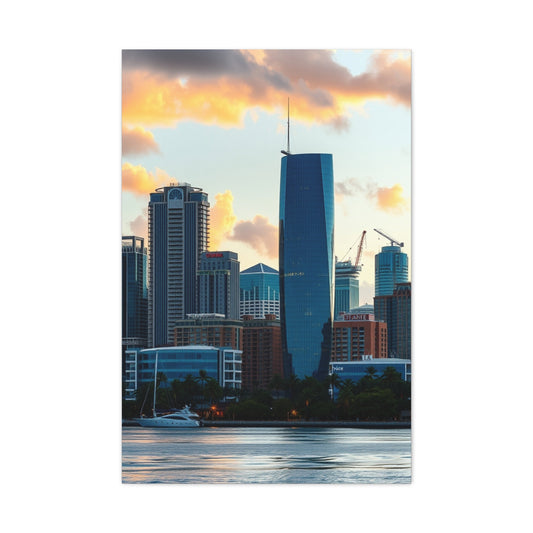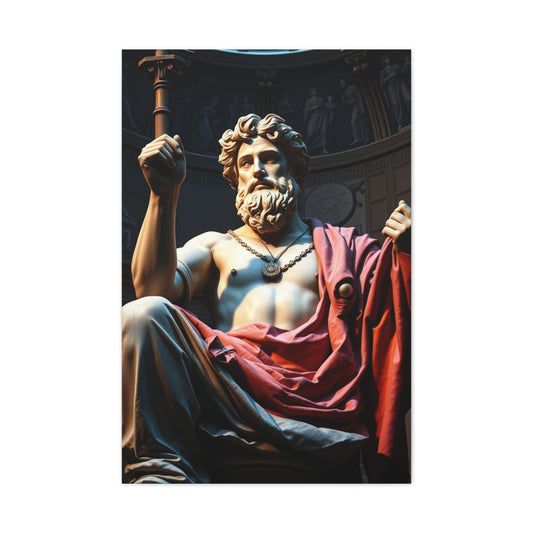Creating a stunning gallery wall can transform a room from ordinary to extraordinary, giving your space personality and visual appeal. Whether you have large photo prints, artwork, or a mix of both, figuring out how to hang pictures on a wall can feel intimidating at first. The process, however, becomes much simpler with a clear plan, the right tools, and a bit of creativity. By taking the time to plan your layout, measure your walls, and use thoughtful placement techniques, you can create a display that draws attention, showcases your favorite memories, and enhances the overall style of your home.
Before placing anything on the wall, it’s essential to decide on a cohesive theme or style for each room. This helps maintain a sense of harmony and flow, preventing the wall from looking chaotic or mismatched. Start by considering the room’s purpose and atmosphere. In a living room, family photos or abstract art may create a welcoming and vibrant vibe. In bedrooms, softer imagery or personal mementos can offer a more intimate, relaxed feel. Hallways can become a gallery in themselves, perhaps featuring travel photos, wedding portraits, or scenic landscapes. Once you’ve chosen a theme, you can begin thinking about the types of frames, sizes of prints, and arrangement styles that will complement both the wall and the room’s existing decor.
Measuring the wall is a critical next step. Without accurate measurements, even the most carefully curated collection of images can appear cluttered or off-balance. Begin by using a tape measure to determine the full width and height of the wall where your gallery will go. Lightly mark the area with a pencil to visualize the space. This initial measurement phase allows you to decide how many pieces will fit comfortably and how to distribute them evenly. For larger walls, consider a combination of small, medium, and large prints to create visual variety. Smaller walls or narrow spaces may only require two or three well-placed images to make a statement without overcrowding the area.
When determining the height at which to hang your pictures, there are some practical guidelines to keep in mind. A common recommendation is to position the midpoint of each artwork approximately 56 to 60 inches from the floor. This height generally aligns with eye level for most adults, creating a natural viewing experience. Additionally, when hanging pictures above furniture such as sofas, beds, or consoles, leave a gap of 8 to 10 inches between the top of the furniture and the bottom edge of the frame. This spacing ensures that the artwork feels connected to the room’s furniture without appearing too high or too low.
After measuring, it’s time to plan your layout. Using craft paper as placeholders is a technique that many interior designers and DIY enthusiasts recommend. It allows you to experiment with different arrangements without making unnecessary holes in the wall. Start by placing each frame or canvas face down on a large piece of craft paper and tracing its outline. Don’t worry about perfection—the goal is to create a template that represents the dimensions of your artwork. Once you’ve traced each piece, cut out the shapes from the paper. These paper cutouts will act as stand-ins while you arrange the layout on the floor or against the wall.
Arranging the paper cutouts on the floor first helps you visualize the final gallery wall. This stage allows you to experiment with various sequences, orientations, and spacing between images. You can mix different shapes, sizes, and textures to see how they interact visually. Moving pieces around multiple times is encouraged, as it gives you a better understanding of how balance and symmetry—or deliberate asymmetry—can impact the overall look. When you are satisfied with the arrangement, the next step is to transfer the layout to the wall.
|
Related Catagories: |
Taping the craft paper shapes to the wall provides a temporary yet accurate guide for your picture placement. Use painter’s tape or masking tape to attach each paper cutout in the exact position you want the corresponding frame to occupy. Maintain consistent spacing between the placeholders: approximately two inches for larger frames and about 1.5 inches for smaller ones. Adjust the placement if necessary to achieve visual harmony. This step is invaluable because it allows you to step back and assess the composition from a distance, ensuring that everything looks cohesive and well-proportioned before committing to nails or hooks.
Selecting the proper tools for hanging your pictures is another key consideration. The weight, size, and wall type will determine whether nails, adhesive strips, J-hooks, sawtooth brackets, or eye hooks are most appropriate. Lightweight prints can often be hung using adhesive hooks or strips, while heavier frames will require sturdier options such as nails or brackets. Adhesive solutions typically support up to around seven pounds, so they are best suited for smaller prints. For larger or heavier pieces, nails and sawtooth brackets can reliably hold 20 pounds or more, depending on the wall material. Always consider the type of wall you are working with—drywall, plaster, concrete, or masonry—as this influences which hanging method will be both safe and effective.
Balancing creativity with technical precision ensures that your gallery wall will be both visually appealing and structurally secure. Consider color schemes and thematic consistency when selecting frames and artwork. You may opt for all black-and-white photographs for a cohesive, minimalist look, or mix colorful prints and canvases for a more dynamic and playful display. Combining different textures, frame styles, and orientations can also add depth and interest, creating a wall that invites viewers to explore each individual piece while appreciating the composition as a whole.
Planning a gallery wall is a deliberate process that involves a mix of measurement, experimentation, and artistic expression. Starting with a clear theme, accurate wall measurements, and temporary placeholders allows you to create a layout that works in harmony with the room’s design. Using the right tools and spacing techniques ensures your pictures will hang securely and evenly, while thoughtful selection of artwork, frames, and color palettes contributes to the wall’s visual impact. By investing time in this process, you can transform ordinary walls into captivating displays that reflect your personal style and bring warmth, beauty, and character to your living spaces.
Once you have your wall measured, placeholders set, and theme decided, the next step is focusing on designing a gallery wall that is visually appealing and functional. The layout of your pictures has a significant impact on the overall look of the room, and planning it carefully ensures a cohesive, polished result. Several strategies and approaches can be applied depending on your wall size, available artwork, and personal style. Understanding these strategies and experimenting with layouts before hanging the frames is key to creating a beautiful photo wall that elevates your space.
One effective method for designing your gallery wall is to use the floor as a staging area. Laying out your frames on the floor first allows you to experiment with positioning, spacing, and alignment before making any permanent marks on the wall. Arrange the pieces according to size, color, or theme. For example, placing larger frames at the center and smaller ones around them creates a focal point and establishes visual hierarchy. Alternately, you could cluster frames of similar size together for a more uniform look. This experimentation helps you determine how the wall will feel once the frames are up and allows adjustments without the stress of hammering nails into the wall multiple times.
Using craft paper cutouts is a strategy that simplifies the process further. After tracing your frames onto craft paper, cut out each shape and temporarily tape them to the wall according to the arrangement you designed on the floor. This method gives you a real sense of how your layout interacts with the room and surrounding furniture. It is easier to step back, evaluate the balance, and make adjustments before the frames are permanently attached. You can try multiple configurations by moving the paper cutouts around until the composition feels harmonious. This approach also helps prevent mistakes in spacing and alignment, which can be particularly frustrating to fix once nails are in the wall.
When considering the placement of each piece, it’s important to focus on balance, proportion, and spacing. Consistency in spacing helps the gallery wall look intentional rather than haphazard. For large frames, leaving approximately two inches between pieces ensures each artwork has room to breathe while still appearing cohesive. Smaller frames can be positioned closer together, around 1.5 inches apart. Pay attention to the wall’s dimensions, furniture placement, and overall sightlines. Artwork should complement the room, not overwhelm it or appear awkwardly positioned. Centering the gallery relative to furniture, such as a sofa or console, helps anchor the wall and creates a sense of symmetry, even in asymmetrical arrangements.
Gallery walls can follow different layout styles depending on your aesthetic preference and the room’s purpose. One popular style is the symmetrical arrangement, which provides a clean, structured, and organized appearance. This layout works best with frames of similar size and shape. By creating a grid or evenly spaced pattern, the eye can move naturally across the wall without feeling disrupted. Symmetrical arrangements are often suited for formal living spaces, dining areas, or offices where a polished and orderly aesthetic is desired. Attention to detail, precise measurements, and use of a level are particularly important for symmetrical designs to ensure the lines and alignment are visually pleasing.
In contrast, asymmetrical gallery walls offer a more dynamic and creative approach. This style allows you to mix frames of varying sizes, colors, and orientations to produce a lively and eclectic display. Asymmetry provides visual interest and encourages the viewer to explore each individual piece more carefully. This method is ideal for rooms that embrace bold design choices or where you want to highlight a collection of diverse artwork. While asymmetrical layouts allow more freedom, it’s still important to maintain a sense of balance. Consider grouping frames around a central piece or distributing visual weight evenly across the wall to prevent one side from feeling heavier than the other.
Another creative option is the diagonal gallery wall, often used in staircases or angled walls. This style takes advantage of the slanted direction to guide the eye naturally along the path, creating movement and flow. Measuring diagonal walls can be more challenging, but the effort pays off with a striking presentation. Begin by identifying a focal point, such as a larger piece or a central image, and arrange smaller frames around it in a flowing diagonal pattern. Maintaining consistent spacing along the diagonal helps the wall look intentional and organized while still offering a sense of creativity and uniqueness.
Simple gallery walls are a versatile and minimalistic option, ideal for small spaces or areas where you want subtle decoration. This style works well for bedrooms, offices, or entryways with limited wall space. Rather than attempting to fill the entire wall, choose a few carefully selected images that reflect the room’s theme. This approach allows the artwork to shine without overwhelming the space. Simple gallery walls are also easier to update or rearrange over time, giving you flexibility to refresh the display as your tastes evolve or as new pieces are added.
For larger, statement-making pieces, a spread arrangement can be an effective strategy. In this method, a single image is divided into multiple canvases or prints to create a dramatic effect across a large wall. This approach works particularly well with panoramic photos, landscapes, or abstract artwork. Alignment is critical in spread arrangements, as slight inconsistencies in spacing can disrupt the visual impact. Start by determining the center of the wall and aligning the central panels first, then work outward to ensure a symmetrical or evenly spaced layout. Spread arrangements are ideal for living rooms, hallways, or feature walls where you want to make a bold artistic statement.
Beyond layout, the choice of frames and matting significantly influences the gallery wall’s overall appearance. Matching frames create a unified, cohesive look, while mixing frame styles and colors can add personality and visual variety. Matting can enhance the artwork by providing a visual border, making smaller images appear more prominent, and adding a sense of depth. When combining frames, consider consistency in color, material, or thickness to prevent a chaotic or cluttered appearance. The key is achieving balance between visual interest and harmony.
Color coordination is another factor that affects the gallery wall’s appeal. Selecting images that share a common palette or contrasting hues in a harmonious way creates visual cohesion. For example, black-and-white photographs can create a timeless and dramatic effect, whereas mixing bright, colorful images can energize a room. Pay attention to the surrounding room decor, including wall color, furniture, and accessories. Ensuring that the gallery complements the space helps integrate it seamlessly rather than having it appear as an isolated feature.
Lighting is often overlooked but can dramatically enhance the appearance of a gallery wall. Adequate illumination ensures that each piece is visible and highlights the textures, colors, and details of your artwork. Natural light can be complemented with strategically placed spotlights, picture lights, or wall sconces. Adjustable lighting allows you to highlight specific pieces and create depth, adding a professional touch to your display. Proper lighting also ensures the gallery wall remains visually appealing throughout the day and evening.
Maintenance and flexibility are additional considerations when creating a gallery wall. Unlike a single large artwork, a gallery allows for easy updates. Individual frames can be swapped out or repositioned without disturbing the entire layout. This flexibility is particularly useful if you want to refresh seasonal displays, introduce new artwork, or rotate family photographs. Keeping the wall organized and occasionally dusting frames ensures the gallery remains attractive and well-kept over time.
Hanging a gallery wall involves more than just selecting artwork and arranging it on the floor. Choosing the right tools, understanding wall types, and using proper techniques are essential steps to ensure that your pictures remain secure and that your walls stay undamaged. Each type of wall—whether drywall, plaster, concrete, or brick—requires specific hardware and considerations. Approaching the task methodically will save time, reduce errors, and allow your gallery to look professional and polished.
Before picking up a hammer or adhesive strip, it is crucial to determine the weight of each frame. Lighter frames, typically under seven pounds, can be safely hung using adhesive hooks or strips. These are ideal for renters or anyone who prefers not to leave permanent holes in their walls. Heavier frames require sturdier solutions such as nails, J-hooks, sawtooth brackets, or eye hooks. The general rule is to distribute weight evenly and to choose hardware rated for at least the frame’s weight. For very heavy artwork, multiple hooks or wall anchors may be necessary to ensure safety and stability.
Nails are among the most straightforward and widely used hanging solutions. For small to medium-sized frames, a single nail placed at the top center of the frame can be sufficient. For larger or heavier pieces, two nails spaced evenly along the top provide better support. When using nails, it is important to insert them at a slight upward angle. This technique increases stability and prevents the frame from slipping downward. A level should always be used to ensure frames hang straight, as even slight tilts can be noticeable in large gallery walls.
J-hooks offer another reliable method for hanging frames, particularly heavier ones. These hooks typically have a lip that secures the frame while distributing weight evenly across the wall. J-hooks come in a variety of sizes and weight capacities, so selecting the correct type for each frame is essential. Installation is similar to nails but provides added security for frames with a single hanging point. They are also ideal for grouping multiple frames close together because the lip keeps the artwork from shifting.
Sawtooth brackets are a classic solution for picture hanging, particularly for medium-sized frames. These brackets attach to the back of the frame and provide a single point of contact with the wall. Sawtooth brackets work well for creating grids or symmetrical layouts because they allow precise leveling. When using sawtooth brackets, make sure to measure and mark the wall carefully to maintain uniform spacing and alignment across the entire gallery. Using a level in conjunction with measuring tape ensures that each frame sits exactly where intended.
Eye hooks and wire systems are another versatile option, especially for larger frames or those with significant weight. A wire stretched across the back of the frame, anchored by two eye hooks, allows for flexible placement and easy leveling. This method is particularly useful for asymmetrical or eclectic gallery walls where adjustments may be necessary over time. By securing the wire to hooks or screws in the wall, frames can be shifted slightly without removing hardware, providing flexibility during installation.
Adhesive strips, often marketed as damage-free hanging solutions, are ideal for lightweight frames and smaller prints. They are easy to apply, remove cleanly, and eliminate the need for nails or drilling. When using adhesive strips, it is important to follow the manufacturer’s weight recommendations and placement instructions. Generally, placing the adhesive closer to the top of the frame enhances support and prevents tilting. While convenient, adhesive strips are not suitable for heavy or large frames, so assessing the weight of each piece is crucial before relying solely on this method.
Once the hardware is selected, positioning the frames on the wall requires careful measurement and alignment. Using a tape measure, mark the top or center point of each frame according to the planned layout. For symmetrical gallery walls, ensure that all measurements are consistent to maintain uniform spacing and alignment. For asymmetrical or eclectic layouts, focus on visual balance by evenly distributing larger and smaller frames across the wall. A level is an indispensable tool in this process, guaranteeing that each frame hangs straight and that the overall gallery looks intentional and polished.
Spacing is one of the most important factors in creating a visually appealing gallery wall. Consistent spacing between frames enhances cohesion and prevents the wall from feeling cluttered. For larger frames, leaving approximately two inches between pieces creates a balanced appearance, while smaller frames may be positioned closer together, around 1.5 inches apart. Adjust spacing based on the wall’s size and available artwork, keeping in mind that the eye tends to gravitate toward central focal points. Strategic placement ensures that the viewer’s attention flows naturally across the gallery.
|
Related Catagories: |
Wall type plays a significant role in determining how to hang pictures securely. Drywall is common in many homes and can usually accommodate nails, screws, or adhesive hooks for lighter pieces. For heavier frames, wall anchors or toggle bolts provide additional support. Plaster walls require pre-drilling holes and using anchors to prevent cracking. Concrete or masonry walls often require specialized hardware, such as masonry screws or expansion anchors, along with a power drill for proper installation. Understanding your wall type and using the appropriate tools ensures safety and prevents damage during installation.
Lighting is another crucial element that enhances the presentation of a gallery wall. Proper illumination allows the colors, details, and textures of your artwork to be appreciated fully. Natural light from windows can complement your display, while artificial lighting—such as track lighting, spotlights, or picture lights—can emphasize key pieces. Adjustable lighting allows you to direct focus on individual frames, creating depth and enhancing the overall aesthetic. Avoid harsh or uneven lighting, which can create shadows and detract from the wall’s visual impact.
Once all frames are hung, taking a step back to evaluate the overall look is essential. Check for consistency in spacing, alignment, and balance. Walk across the room or view the wall from different angles to ensure that the composition looks cohesive and intentional. Minor adjustments can make a significant difference, so don’t hesitate to reposition frames slightly to achieve optimal visual appeal. Attention to detail in this final review elevates the gallery from a collection of images to a curated display that adds personality and style to your home.
Maintaining a gallery wall over time is also an important consideration. Dusting frames regularly prevents buildup and keeps artwork looking fresh. For walls with adhesive hooks or strips, check periodically to ensure that they remain secure, especially for heavier pieces. Over time, you may wish to update the display by adding new images, changing themes, or rearranging frames. The flexibility of a gallery wall allows for seasonal updates, the inclusion of new memories, or the incorporation of evolving design trends without starting from scratch.
The versatility of a gallery wall extends to the types of artwork and objects you can display. Photographs, canvas prints, paintings, and even three-dimensional items like small shelves or decorative objects can be integrated into a wall display. Mixing textures and materials adds depth and interest, while thoughtful curation ensures that each piece contributes to the overall aesthetic. Using frames with varying finishes—such as wood, metal, or painted surfaces—can create subtle contrast and highlight individual pieces while maintaining cohesion across the gallery.
Finally, personal touches are what make a gallery wall truly unique. Including family photos, travel memories, or sentimental artwork adds emotional resonance to the visual display. Consider incorporating pieces that reflect your personality, experiences, or passions. By combining thoughtful layout, proper hanging techniques, and personal selection of artwork, your gallery wall becomes more than just decoration—it transforms into a meaningful focal point that tells a story and enhances the character of your home.
Creating a gallery wall is more than just hanging pictures; it’s an opportunity to express creativity, reflect personal style, and enhance the ambiance of a room. Once the planning, layout, and installation are complete, the next step is to focus on design details that elevate the wall from a collection of images to a cohesive and visually captivating display. Attention to arrangement, color, texture, and finishing touches can transform a simple wall into a focal point that complements the room’s overall aesthetic.
One of the most effective ways to make a gallery wall stand out is by carefully curating the selection of artwork. While the subject matter can vary widely, maintaining a thematic connection ensures visual harmony. For instance, choosing images with similar color tones, subject matter, or mood creates a unified look, even if the frames or sizes differ. Family photographs, scenic landscapes, abstract paintings, or botanical prints can each inspire a distinctive theme. By thoughtfully selecting artwork that shares a common thread, the wall appears intentional rather than chaotic, even when incorporating a mix of styles.
Mixing frame types, finishes, and sizes adds depth and interest to the gallery wall. Using a combination of thin and thick frames, wood and metal finishes, or black and white alongside colorful frames can create a layered, dynamic effect. While variety adds visual intrigue, it’s important to maintain some level of cohesion. This might involve limiting the number of different frame colors or materials or using a consistent spacing strategy to keep the wall balanced. Thoughtful contrasts between frames and artwork can draw attention to key pieces while ensuring that the overall display remains harmonious.
Incorporating different types of artwork beyond traditional photos can also enhance the gallery wall’s appeal. Canvas prints, hand-painted art, small sculptures, shadow boxes, and even decorative plates or textile art can be integrated into the arrangement. Including three-dimensional elements creates texture and adds dimension, making the wall more visually engaging. Mixing flat and raised elements encourages viewers to explore the wall more closely, offering a unique and personalized display that highlights both creativity and personality.
When arranging frames, consider the visual flow of the gallery wall. The eye should move naturally across the composition, guided by focal points and visual balance. Larger, bold pieces often serve as anchors that draw initial attention, while smaller or subtler pieces fill gaps and support the overall aesthetic. Placing pieces with strong visual weight at the center or at eye level establishes hierarchy, helping the viewer navigate the display. Maintaining consistent spacing and alignment, even in asymmetrical layouts, ensures that the gallery appears organized and thoughtfully arranged.
Color plays a significant role in creating a visually pleasing gallery wall. Coordinating the hues of artwork, frames, and surrounding decor establishes harmony. Monochromatic palettes, such as black and white photographs, provide a classic, timeless look that suits modern and traditional interiors alike. Alternatively, complementary colors or themed color schemes can energize a room and create a lively atmosphere. When mixing colors, balance is key: distribute vibrant pieces evenly across the gallery to avoid clustering and ensure that one area does not dominate the display.
Lighting can dramatically affect the perception of a gallery wall. Properly illuminated artwork not only enhances details and colors but also adds depth and dimension to the space. Consider a combination of natural and artificial lighting to achieve the best effect. Adjustable track lighting, picture lights, or wall sconces can highlight specific pieces or the entire gallery. Avoid harsh or uneven lighting, which can create unwanted shadows and distract from the artwork. Strategically positioned lighting emphasizes focal points, creating a professional and polished presentation that elevates the wall’s visual impact.
For eclectic or asymmetrical gallery walls, maintaining a sense of rhythm is essential. Even when mixing various frame sizes, shapes, and subjects, the arrangement should feel cohesive. Repetition of certain elements—such as color, frame style, or subject matter—can tie the diverse pieces together. For example, alternating two or three consistent frame styles or repeating a specific color within multiple prints creates a visual anchor that guides the eye. This technique balances creative freedom with structure, allowing the wall to feel curated rather than haphazard.
In spaces with limited wall area, simplicity can be highly effective. A few carefully chosen pieces can make a powerful statement without overcrowding the wall. Small gallery clusters or single standout pieces above furniture like a desk, bed, or console table can add personality and charm to a room. Minimalist arrangements emphasize the artwork itself and are easier to update or rearrange over time. By focusing on a smaller number of high-impact pieces, the gallery becomes a refined and intentional display rather than a crowded composition.
In larger rooms or on expansive walls, creating multiple focal points or layering artwork can enhance depth and interest. Dividing the wall into zones or clusters allows for a balanced presentation, especially when incorporating pieces of different sizes. Centering the largest or most eye-catching work in each cluster ensures visual cohesion, while smaller pieces surrounding it fill the space and add complexity. Thoughtful grouping helps prevent the gallery from feeling overwhelming, even on very large walls, and ensures that each piece contributes to the overall composition.
Personalization is an integral aspect of gallery walls. Incorporating personal photographs, travel mementos, or meaningful artwork adds emotional resonance and makes the space uniquely yours. Family portraits, candid snapshots, or handmade artwork can coexist with professional prints or abstract pieces to create a layered and deeply personal display. This mix of personal and curated artwork ensures that the gallery reflects your identity and experiences while also functioning as a stylish decorative feature in the home.
Seasonal updates and rotation of artwork are another way to maintain a fresh and dynamic gallery wall. Swapping out certain pieces, rotating photographs, or adding seasonal decor allows the wall to evolve over time without requiring a complete redesign. This flexibility keeps the display interesting and responsive to changing tastes, special occasions, or evolving home decor trends. Being able to refresh the gallery over time also encourages experimentation and creativity, allowing the wall to remain a living, adaptive part of your home.
For walls with angled or unconventional shapes, such as staircases or vaulted ceilings, custom layouts can take advantage of the architecture. Diagonal or stepped arrangements along staircases create movement and guide the eye upward or downward. On tall walls, stacking frames vertically or using vertical focal points draws attention and makes use of the height effectively. By adapting the gallery to fit architectural features, you can enhance both the artwork and the structural character of the room, creating a unique visual experience.
Texture is another key element to consider in gallery wall design. Incorporating frames with different finishes, artwork with raised surfaces, or objects with three-dimensional qualities adds tactile interest. Layering textures can soften the visual effect, making the wall feel more inviting and engaging. For example, combining smooth canvas prints with textured paper art, wooden frames, or woven elements creates depth and complexity, offering a richer viewing experience. Texture complements color and layout, contributing to a more dynamic and aesthetically pleasing gallery.
Finishing touches are what complete a gallery wall. Ensuring that all frames are clean, aligned, and free from dust or fingerprints enhances the professionalism of the display. Adding subtle decorative elements, such as a small shelf or a ledge for interchangeable artwork, allows for ongoing flexibility and updates. Maintaining the gallery over time, including occasional adjustments to keep frames level and straight, ensures that the wall continues to look polished and intentional. Attention to these details transforms a well-planned gallery wall into a lasting, impactful feature of your home.
Final thoughts
Creating a gallery wall is an opportunity to combine creativity, personal expression, and thoughtful design. From selecting artwork and planning layouts to choosing the right tools and arranging pieces, each step contributes to a display that is both beautiful and meaningful. Gallery walls allow you to showcase memories, favorite art, and personal style, transforming ordinary walls into captivating focal points.
The process encourages experimentation—whether you prefer symmetrical grids, eclectic arrangements, minimalist clusters, or bold, multi-piece spreads. By paying attention to spacing, alignment, color harmony, texture, and lighting, you ensure that your gallery feels cohesive, polished, and intentional. Incorporating personal touches and three-dimensional elements can add depth and character, making the wall uniquely yours.
Gallery walls are versatile, adaptable, and timeless. They can evolve over time, allowing seasonal updates, new artwork, or rearrangements as your collection grows or tastes change. This flexibility makes them a dynamic part of any home, offering both style and personal storytelling.
Ultimately, the beauty of a gallery wall lies in its ability to reflect your personality, tell your story, and enhance the ambiance of a room. With thoughtful planning, creativity, and attention to detail, any wall can become a statement piece—welcoming, inspiring, and uniquely yours.
























